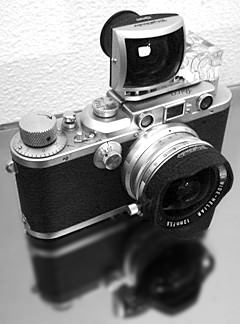LUMIX DMC-TZ series
In the camera world, digital is closer to the body than analog.
A film camera captures an image by chemically reacting substances coated on the film according to the amount of light. Color photography began with black-and-white photography, which recorded only the intensity of light, and came to be able to record the intensity of RGB light.
In a digital camera, the image is captured by a sensor called a CCD. This sensor converts the intensity of RGB light into electrical signals. The number of pixels in this sensor is called pixels, and the higher the number, the higher the resolution of the image.
On the other hand, in the structure of the human eye, optic nerve cells regularly arranged in the retina convert projected light into electrical signals. The information is transmitted to the brain, and various processes such as white balance adjustment, distortion correction, and noise reduction are performed. The process is very similar to that of a digital camera. The CCD cells are optic nerve cells (cells), and the brain that processes images can be said to be an integrated circuit.
Therefore, the transition from film to digital can be said to be a more physical change. In that sense, the appearance of the digital camera should have been revolutionary.
However, in reality, this is not the case, and digital cameras have evolved with single-lens reflex cameras, which are an extension of film cameras, at the apex.
<br>
In the first place, a film camera must optically perform various image processing with the lens. For that reason, a complicated lens design is required, resulting in a large aperture and large size. On top of that, with a single-lens reflex camera, a mirror is placed between the lens and the CCD, creating a distance, which limits the degree of freedom in lens design. This structure is particularly unsuitable for wide-angle lenses, which are often used in architectural photography. Furthermore, since the lens is interchangeable, image correction that matches the lens characteristics cannot be performed. As a result, we cannot rely on image processing, which is a benefit of digitization, and have to rely on conventional lens performance.
For these reasons, I have never introduced a digital camera. However, in fact, there is a camera that makes you feel a new direction of evolution. Panasonic's "DMC-TZ" series.
The "DMC-TZ" series is a compact digital camera equipped with a high-power zoom. If you mount a high-power zoom lens from a wide angle, naturally there will be considerable distortion. However, this camera has almost no distortion from the wide-angle end to the entire zoom range. It is not hard to imagine that the lens is corrected so perfectly that there is no aberration. Other companies also have products that correct the distortion of recorded images. However, the "TZ" series is the only digital camera that corrects distortion from the preview screen. Especially when it comes to distortion, "TZ3" is almost perfect and the best in the series.
Relying solely on software would result in a drop in resolution, but the TZ series intentionally reduces the effective pixels so that the pixels in the periphery are used, and distortion is corrected without sacrificing resolution. In fact, the "LUMIX FX35", which has the same 10.7-megapixel CCD, has 10.1-million effective pixels, but the "TZ5" has only 9.1-million pixels, which is a luxury in a sense.
As a result of such technology, correction processing is performed in real time from the preview screen. A big advantage of real-time is moving images. So far, there is no other equipment that can easily shoot wide-angle videos with such little distortion in high-definition.
The unique concept of the "TZ series" is an innovative idea that is not common knowledge for digital cameras. Image correction and lenses complement each other, and it makes me feel that the possibility of realizing a high-performance, wide-angle, and compact camera has finally expanded.
The direction of digital camera evolution in the future is likely to be toward higher image quality, wider angles, and compactness by increasing the degree of freedom in lens design by compensating for color/distortion aberrations and peripheral light reduction with image processing. In such an era, the balance between image processing and lenses will compete over lens performance. And the main battlefield will shift from single-lens reflex cameras to a market suitable for digital.
